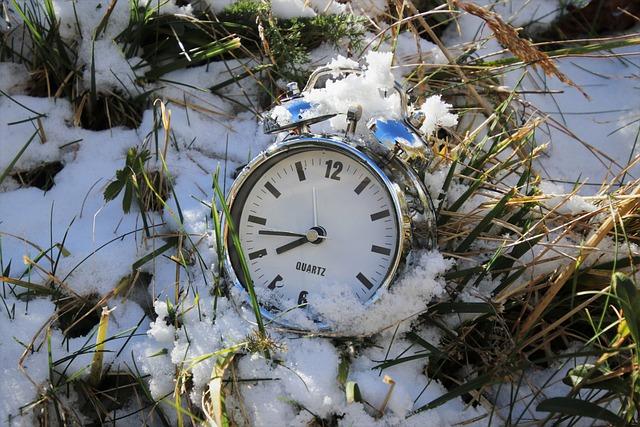How Cold Is an Ice Bath Supposed to Be: Finding Your Optimal Chill

Do you ever wonder how cold you should make your ice bath for maximum benefits? It’s a question that has perplexed many athletes, fitness enthusiasts, and even curious individuals looking to loosen up their muscles or recover faster. In this article, we delve into the science behind ice baths and explore the optimal chill that can help you achieve your desired results. So, get ready to dive deep into the icy waters as we uncover the truth about how cold an ice bath is supposed to be, and how it can elevate your recovery game to new heights.
Contents
- 1. Understanding the Science Behind Ice Baths: Unraveling the Therapeutic Effects of Cold Immersion
- 2. Determining the Ideal Temperature: Exploring the Range of Coldness to Maximize Benefits
- 3. Factors Influencing Your Optimal Chill: Discovering Your Body’s Tolerance and Limitations
- 5. Enhancing Performance and Reducing Inflammation: Leveraging Ice Baths for Athletic Recovery
1. Understanding the Science Behind Ice Baths: Unraveling the Therapeutic Effects of Cold Immersion
When it comes to ice baths, the temperature plays a crucial role in determining their therapeutic effects. While there is no one-size-fits-all answer to how cold an ice bath should be, finding your optimal chill depends on a few factors. First and foremost, it’s important to consider your personal tolerance to cold. Some individuals might feel comfortable with a lower temperature, while others might prefer a slightly higher one.
<p>Generally, ice baths are recommended to be around 5-10 degrees Celsius (41-50 degrees Fahrenheit). This range is considered an ideal balance between achieving the desired therapeutic effects and minimizing the risk of discomfort or potential injury. Within this range, the cold immersion activates the body's natural response to the cold, triggering a series of physical reactions that have been associated with numerous benefits.</p>
<p><strong>Benefits of cold immersion:</strong></p>
<ul>
<li>Reduces inflammation and soreness in the muscles</li>
<li>Enhances recovery post-exercise by improving blood circulation</li>
<li>Increases energy levels and combats fatigue</li>
<li>Boosts the immune system</li>
<li>Can alleviate symptoms of certain skin conditions</li>
</ul>
<p>However, it's important to listen to your body and adjust the temperature accordingly. If you are new to ice baths or have a lower tolerance for cold, you might start with a slightly higher temperature and gradually decrease it over time. Remember to always consult with a healthcare professional or sports therapist before incorporating ice baths into your routine, especially if you have any <a href="https://alphamalefts.com/2022/08/13/freezer-for-ice-bath-diy-cold-therapy-solutions/" title="Freezer for Ice Bath: DIY Cold Therapy Solutions">underlying medical conditions</a> or injuries.</p>2. Determining the Ideal Temperature: Exploring the Range of Coldness to Maximize Benefits
When it comes to ice baths, finding the perfect temperature is crucial to maximize the benefits. While the idea of submerging yourself in freezing cold water might sound daunting, the right chill can do wonders for your body. Let’s delve into the range of coldness and how it can help you achieve your optimal chill.
The Goldilocks Principle:
- Too cold: While it might seem tempting to go for the coldest possible temperature, it’s important to find a balance. Extremely low temperatures can be shockingly uncomfortable and may do more harm than good. Your body needs to adapt gradually without causing excessive stress.
- Too warm: On the other hand, if the water is too warm, you won’t reap the full benefits of an ice bath. The purpose of this therapy is to activate your body’s natural response to cold, which triggers various physiological reactions.
Finding Your Sweet Spot:
Now that we understand extremes, let’s focus on the ideal temperature range. Experts suggest that the optimal temperature for an ice bath falls between 50°F (10°C) and 59°F (15°C). Within this range, your body can experience the maximum benefits without excessive discomfort. It’s important to note that individuals may have different preferences, so experimenting within this range is encouraged to find your personal sweet spot.
To help you optimize your ice bath experience, consider using a thermometer to measure and maintain the desired temperature. Additionally, monitoring your body’s response and paying attention to how you feel during and after the ice bath can provide valuable insights.
3. Factors Influencing Your Optimal Chill: Discovering Your Body’s Tolerance and Limitations
When it comes to ice baths, finding your optimal chill can be a personal journey. The temperature that works for one person may not have the same effect on another. Several factors can influence your body’s tolerance and limitations in cold water, helping you determine what temperature is right for you.
1. Age: Age plays a significant role in how your body responds to extreme cold temperatures. Younger individuals tend to have a higher tolerance and may be able to handle colder baths more comfortably than older people.
2. Fitness Level: Your fitness level also impacts how your body reacts to cold immersion. Individuals who regularly engage in intense physical activity typically have a higher tolerance for cold temperatures. Their bodies are accustomed to stress and can recover faster, making them more adaptable to lower temperatures.
3. Health Conditions: Certain health conditions can affect your body’s ability to tolerate cold temperatures. Conditions such as Raynaud’s disease, diabetes, or circulation problems may require you to adjust the temperature of your ice bath accordingly. It is important to consult with a healthcare professional if you have any underlying health concerns.
4. Gradual Adaptation: Building your tolerance to cold water is a gradual process. Start with a temperature that feels challenging but manageable for a few minutes, and gradually decrease the temperature over time. This allows your body to adapt and gradually increase its tolerance.
| Factors | Effect on Tolerance |
|---|---|
| Age | Younger individuals may have a higher tolerance for colder temperatures. |
| Fitness Level | Individuals who are physically active generally have a higher tolerance for cold immersion. |
| Health Conditions | Underlying health conditions can impact your body’s ability to tolerate cold water. |
| Gradual Adaptation | Gradually decreasing the temperature over time can help your body develop a higher tolerance to the cold. |
5. Enhancing Performance and Reducing Inflammation: Leveraging Ice Baths for Athletic Recovery
Ice baths have long been revered as a popular method for enhancing performance and reducing inflammation in athletes. But just how cold should an ice bath be to truly reap the benefits? Finding your optimal chill is key to maximizing the effects of this recovery technique.
When it comes to ice baths, the general consensus is that temperatures should range from 50 to 59 degrees Fahrenheit (10 to 15 degrees Celsius). This temperature range is believed to be cold enough to trigger the desired physiological responses, but not so frigid that it becomes unbearable or potentially harmful. However, it’s important to note that individual preferences and tolerances may vary, so it’s essential to find what works best for you.
To determine your optimal chill, consider these factors:
1. Comfort Level: Start with a temperature that feels slightly uncomfortable but manageable. Gradually decrease the temperature over time as your body adapts to the cold.
2. Body Composition: Keep in mind that individuals with a higher percentage of body fat may have a harder time maintaining body temperature in colder water. Adjust the temperature accordingly.
3. Recovery Goals: Consider the intensity of your workout and the specific benefits you’re seeking. Lower temperatures may be more effective for reducing inflammation, while slightly higher temperatures may enhance muscle recovery.
4. Duration and Frequency: The recommended time for an ice bath session is typically around 10-15 minutes. However, you can experiment with shorter or longer durations based on personal preference and desired effects. Aim for a frequency of 2-3 times per week to allow your body ample time to recover between sessions.
Remember, consistency is key when incorporating ice baths into your recovery routine. Regularly monitoring your response to different temperatures and adjusting accordingly will help you find your optimal chill and make the most out of this powerful recovery tool. Stay cool, recover well, and keep pushing your athletic performance to new heights. In conclusion, understanding the optimal chill for an ice bath can greatly enhance the benefits you reap from this invigorating practice. By immersing yourself in water between 50 to 59 degrees Fahrenheit (10 to 15 degrees Celsius), you can efficiently stimulate your body’s natural recovery mechanisms without causing any unnecessary discomfort or potential harm. Remember, moderation is key! So, next time you embark on an ice bath adventure, be sure to find your sweet spot and let the frosty waters work their magic. Stay cool, stay focused, and embrace the power of the chill!










